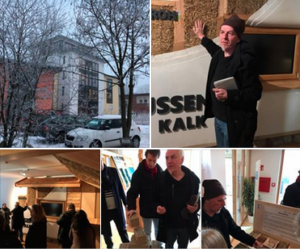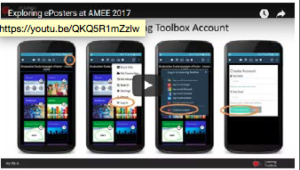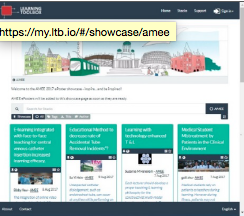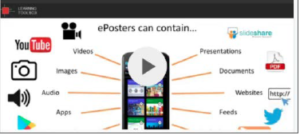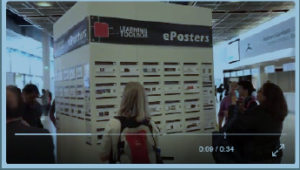One year from the Learning Layers’ final review – Part Three: New information on the follow-up activities in Bau-ABC
In my two previous blogs I have been developing a series of posts that reflects on the Final Review of our EU-funded Learning Layers project (one year ago) and on the achievements of the follow-up activities. My first post focused on the review event and on the blogs with which I have documented the event and the follow during the year 2017. In my second post I summarised the current phase of the follow-up projects – in particular on further uses of the Learning Toolbox (the main result of Learning Layers’ Construction pilot). This reporting was based on a series of working meetings and conversations that we had last week with different partners. In the second post I discussed follow-up projects and initiatives with several partners involved. In addition, I brought forward the use of Learning Toolbox as support for conference presentations and posters (see the showcases) also in our field. In this third and concluding poster I will focus on the use of Learning Toolbox (LTB) in the training activities and related initiatives of the training centre Bau-ABC Rostrup. (As I have reported in my blogs in the years 2012-2017, Bau-ABC was the major application partner in the Learning Layers’ Construction pilot and the central venue for developing and testing the Learning Toolbox.) My report below is based on the information that Bau-ABC trainers shared with us in the working meeting last week.
Use of Learning Toolbox in the regular apprentice training activities
In the context of the Learning Layers project the LTB was developed to be used in the context of apprentices’ projects (normally of one week’s duration) during their stay in the training centre Bau-ABC. At that time the LTB was introduced and tested in a few training occupations (and the results were discussed in evaluation workshops and in interviews with the trainers). Now we were interested to find out, how the Learning Toolbox is being used after the project period.
Lothar Schoka, trainer for the occupations in well-building and borehole building (Brunnenbau, Spezialtiefbau) informed us on the use LTB in his area. It appeared that the use of LTB had become everyday practice in their projects. The information is available in the trade-specific stack, the apprentices get quickly used to working with the toolset and they can combine the work with their mobile devices and work in the computer class. Thus, the use of LTB is a sustainable outcome of the Learning Layers project.
Use of Learning Toolbox for the transversal theme ‘health and safety’
Another arena for working with the LTB has been the transversal theme ‘health and safety’ (Arbeitssicherheit und Gesundheitsschutz). In Spring 2017 a working group of Bau-ABC trainers started to discuss the possibility to use digital tools to support training and learning in this field. At that time I had a chance to accompany and support the start of the working group. After the summer holidays the working group continued with regular meetings and concentrated on using the LTB. Now, trainer Thomas Weerts (the shop steward for health and safety in Bau-ABC) reported on the current phase of the work. The trainers involved in the work had agreed on common content structures for ‘health and safety’ to be covered in their trade-specific stacks for LTB. Thomas himself is developing the ‘mother stack’ for the theme ‘health and safety’ that guides the users to groups of trades and to specific trades. (This ‘mother stack’ will also provide a template for the trades that are still developing their own stacks.)
Use of Learning Toolbox in the project “Workcamp GreenHouse”
A further arena for using the LTB was presented by the trainer Markus Pape (responsible for training carpenters). He is currently working in a nation-wide project “workcamp GreenHouse” that has been launched by several training centres in the construction sector. The project is building exhibition areas and items to demonstrate ecological/sustainable solutions in building houses (with emphasis on energy-efficiency, ecological isolation materials etc.). Altogether, the project is shaping a wide range of modules to introduce these principles in the training for construction sector. In the meeting he presented an overview on the modules and explained, what modules would be suitable for piloting with the LTB. For this purpose he invited the LTB developers to prepare a proposal to be introduced to the project consortium.
Use of Learning Toolbox to support language learning alongside apprentice training
A further arena for working with the LTB is the support for language learning for non-native speakers alongside apprentice training. During the Learning Layers project this area was already explored in a workshop with several Spanish apprentices who were having their training in Bau-ABC. In the meantime a separate working group in Bau-ABC had been developing this idea further. Melanie Campbell (as a coordinator of the related Mobipro-EU project) presented a plan for shaping the LTB stacks that support general orientation (blue tiles), trade-specific vocabulary (green tiles) and communication skills (red tiles). We discussed this plan together with her, the trainers and a supporting language teacher. The developers of Learning Toolbox came up with proposals, how to introduce elements of gamification and motivational support for learners.
– – –
I guess this is enough for an overview. To me this was an important update since I am trying to link cooperation with these initiatives to my participation in our new EU-funded project (TACCLE4 – CPD). In this project we are supporting the training of teachers and trainers in using digital tools and in shaping digital contents for learners. As I see it, the LTB can play a major role in promoting these activities in the field of vocational education and training (VET). But, to be sure, I need to explore this prospect deeper and have more meetings with Bau-ABC trainers.
More blogs to come …
